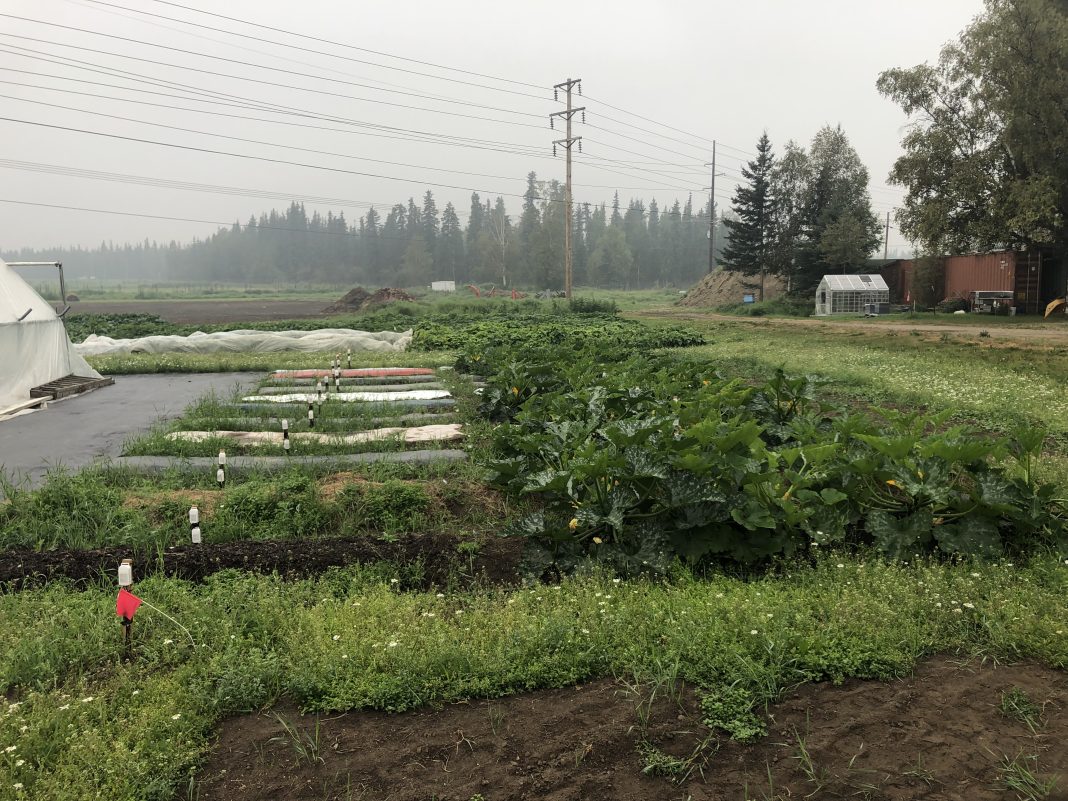Melissa Ward Jones, details when common recommendations for cultivating in cold soils inadvertently thaw permafrost, starting with the challenges of cultivating at high latitudes
Cultivating crops within cold soils at high latitudes can be challenging. The growing season is short, with the risk of frosts at each seasonal margin, and overall, both air and soil temperatures limit crop options that can be grown.
A common recommendation in cultivating cold soils is the use of seasonal extension techniques, such as greenhouses, high tunnels, low tunnels and various mulches (such as plastic and biodegradable like straw and compost) to artificially heat the soil, and depending on the technique used, the air temperature as well (Stevenson et al., 2014).
These cultivation strategies also provide other benefits, such as increased crop yield, weed suppression, and moisture retention. A limitation to the development of seasonal extension techniques in high-latitude regions is that their potential impact on permafrost, the perennially frozen ground that underlies much of the land surface in these areas, has never been evaluated.
Permafrost is a thermal state, so temperature variations at the surface created by different surface covers, such as those being used for seasonal extension techniques, will impact temperatures below ground. The presence of permafrost itself creates these colder soil conditions that the use of seasonal extension techniques are trying to overcome. Artificially warming soils through strategies like mulch applications can and have thawed permafrost and the response of permafrost will depend on its ground ice content (Ward Jones, 2024).

Permafrost Grown collaborator experiences
The Permafrost Grown project, a five-year (2022-2027), $3 million funded by the U.S. National Science Foundation and based at the University of Alaska Fairbanks, works with farmers in Alaska to understand permafrost and agriculture interactions. Collaborating farmers have described problems from thawing permafrost that were exasperated using seasonal extension techniques.
One farmer described a sinkhole that developed within a high tunnel and had to in-fill it with soil to continue using it. Another experienced a fence post that collapsed within a sinkhole, created by using black plastic mulch (Figure 1). One collaborating site is an abandoned peonies farm that was active from 2001-2019. This farmer describes that subsidence (land sinking due to thawing ice-rich permafrost) only became a noticeable problem around 2014. They used high tunnels over their peony rows. Using a remote sensing technique that maps topography using light pulses called Light Detection and Ranging ( LiDAR), measured the amount of subsidence in the field from 2010- 2021. Our results show that areas inside the high tunnel subsided between 50 cm and 130 cm whereas areas outside subsided 50 cm or less.
One element of the project is evaluating the potential thermal impact of seasonal extension techniques in enhancing or limiting permafrost thaw. We monitor the air and soil thermal impact of greenhouses, low tunnels and high tunnels in Fairbanks, Bethel and Anaktuvuk Pass (through a collaboration with Gardens in the Arctic) and soil temperature impacts of mulches through the Great Mulch Study.
The Great Mulch study
The Great Mulch study (header image), an effort co-led by Permafrost Grown team members Glenna Gannon and Melissa Ward Jones is monitoring 11 different mulch types (straw, deep compost, classic black plastic, paper, BioRadical plastic, InfraRed Transmitting (IRT) green plastic, silver, IRT olive plastic, Bio 360 plastic, selective reflective red plastic and white-on-black plastic) as well as a soil only control. Each mulch trial is set up for two treatments, without and with crops (all zucchini). Each plot was instrumented with temperature sensors at three depths: surface, 15 cm (plant root depth) and 100 cm and the 15 cm depth also has a soil moisture sensor.
The preliminary 2023 growing season showed that the average surface temperature between 15th June and 10th September for all the mulches ranged between 16.2°C and 21.6°C; however maximum surface temperatures ranged between 21.5°C and 52.7°C. The warmest air temperatures were experienced during the last two weeks of July, when air temperatures reached a maximum of 32.2°C.
However, this was not when the warmest soil surface temperatures were recorded. Maximum recorded temperatures were reached on a clear sunny afternoon in late June, during a time when high-latitude areas experience a phenomenon not experienced in lower latitudes: the midnight sun. Fairbanks, Alaska, gets about 22 hours of sunlight on the June solstice. Many of the plastic mulches use solar radiation to heat soil and were developed in the lower latitude areas.
The maximum sunlight hours also coincide with when crops are still small and can’t create the same shade conditions as later in the growing season. We found the deep compost and straw had the coolest surface temperatures and could potentially limit permafrost thaw. Knowledge gained from Permafrost Grown monitoring efforts, including the Great Mulch study, will be used to create best practice guides for cultivating permafrost-affected soils.
References
- Stevenson, K.T., Rader, H.B., Alessa, L., Kliskey, A.D., Pantoja, A., Clark, M., Smeenks, J. and Giguère, N., (2014). Sustainable agriculture for Alaska and the circumpolar North: Part III. Meeting the challenges of high-latitude farming. Arctic, pp.320-339.
- Melissa Ward Jones (2024), “Permafrost grown: The heterogeneity of permafrost conditions”, Open Access Government April 2024, pp.386-387.

This work is licensed under Creative Commons Attribution-NonCommercial-NoDerivatives 4.0 International.


